Parivartan Menu at FLOUR Restaurant
Words: Jacob Weber
Photos: Han Sen Hau
The phrase “culinary journey” is thrown around carelessly these days. But the new Parivartan menu at FLOUR is exactly that, literally and spiritually; physically and philosophically.
A journey through time and space — and the heart and mind.
And there is certainly nothing careless about anything on this menu, which is planned, prepared and presented with surgical precision.


Parivartan Menu at FLOUR Restaurant
Parivartan (RM690/pax.) is a 9-course interpretation of Indian cuisine, from centuries-old recipes and traditional techniques to modern flavours and innovative interpretations.

It’s the latest creation of Chef Yogi, a thoughtful man who speaks with as much sagacity and wisdom as his name suggests. Parivartan (change; evolution) is a deeply personal meditation on the very meaning of a culinary experience; one that expresses a unique cultural heritage while celebrating its international influences.
As Chef Yogi puts it – this is not Indian food. This is food from India, with flavour profiles from Persian, Arabic, Turkish and Central Asian influences that entered the Indian subcontinent from 1500 AD and inspired the cuisine we enjoy today. Most food that we’d call ‘Indian’ actually originates from the Mongol empire.
On this menu, the dishes are from all over India – and the ingredients are from across the world. Everything is from “where it’s supposed to be”. Seafood, such as Alaskan white cod, comes from its place of origin. Fruits, such as Thai mangoes, are imported according to absolute seasonal perfection.
As we begin, Chef Yogi reminds us to keep an open mind and an open heart – and any preconceived expectations at bay. This menu is different. This menu is, after all, an evolution.
“You’re challenging assumptions?” I suggest.
“I challenge nothing,” he says with a smile. “I speak the truth.”
Inventive Indian Cuisine at FLOUR
Settled in our extremely comfortable chairs – FLOUR is a gorgeous restaurant, by the way – and expertly attended to by the excellent staff, we begin our journey.
To Start
The first course is three small bites to warm the senses. A fiery dollop of chilli chutney atop a rice cracker opens the mouth and adds heat to the palate, which is beautifully balanced by the almond tart with homemade raita and brined tomato. This little morsel adds a chewiness to contrast the crunchy cracker, and the creamy, tangy yoghurt is just exceptional. Finally, jalebi (India’s national dessert), topped with wasabi, delivers a sweet-and-spicy flavour with a little burst of lemon.
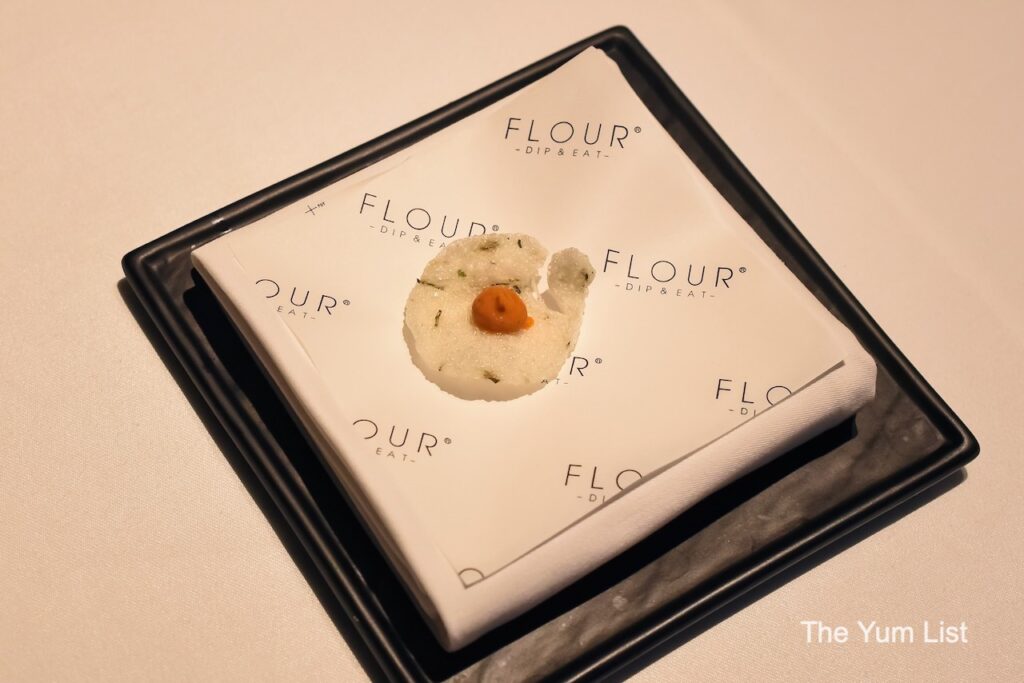

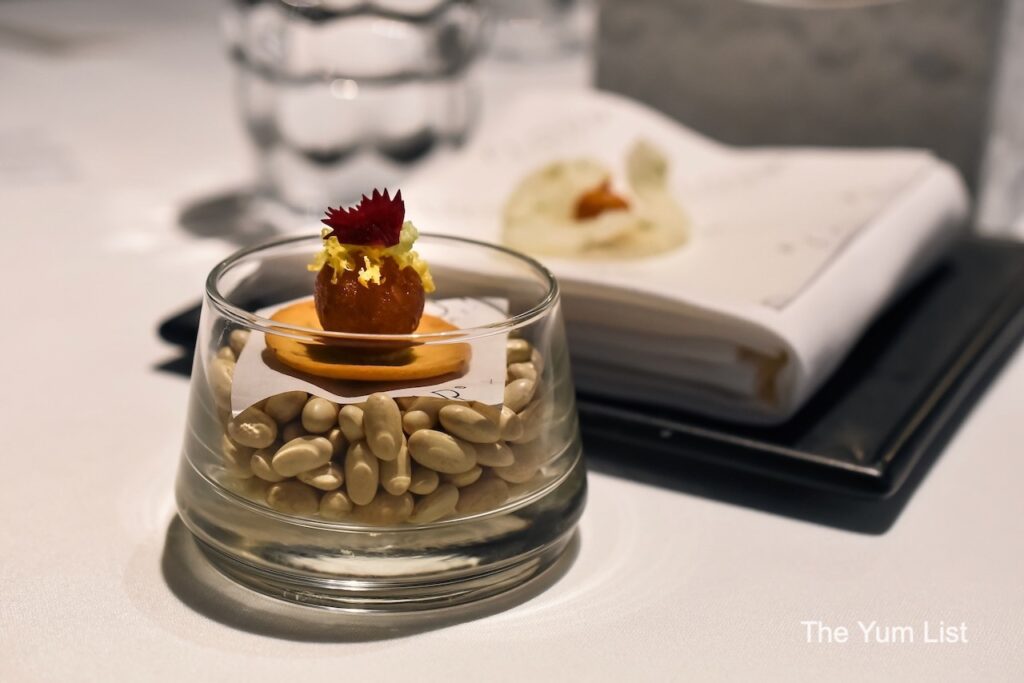
Ker Sangri
Ker Sangri is a signature Rajasthani dish, where most of the population is vegetarian. The traditional version is a 400-year-old recipe based on the foraging tradition, featuring dried beans and berries. Chef Yogi — who, in fact, hails from Rajasthan — has dispensed with tradition and created something entirely new. It’s no longer a hot main course; it’s a cold salad starter, with European ingredients like Spanish tomatoes and Greek cheese. The asparagus and French beans are perfectly crunchy, and tamarind sauce and fennel flower add layers of aroma. Even the edible flowers add actual value to the plate, unlike the Instagram-friendly stuff you see everywhere these days. Here, every garnish has a meaning.
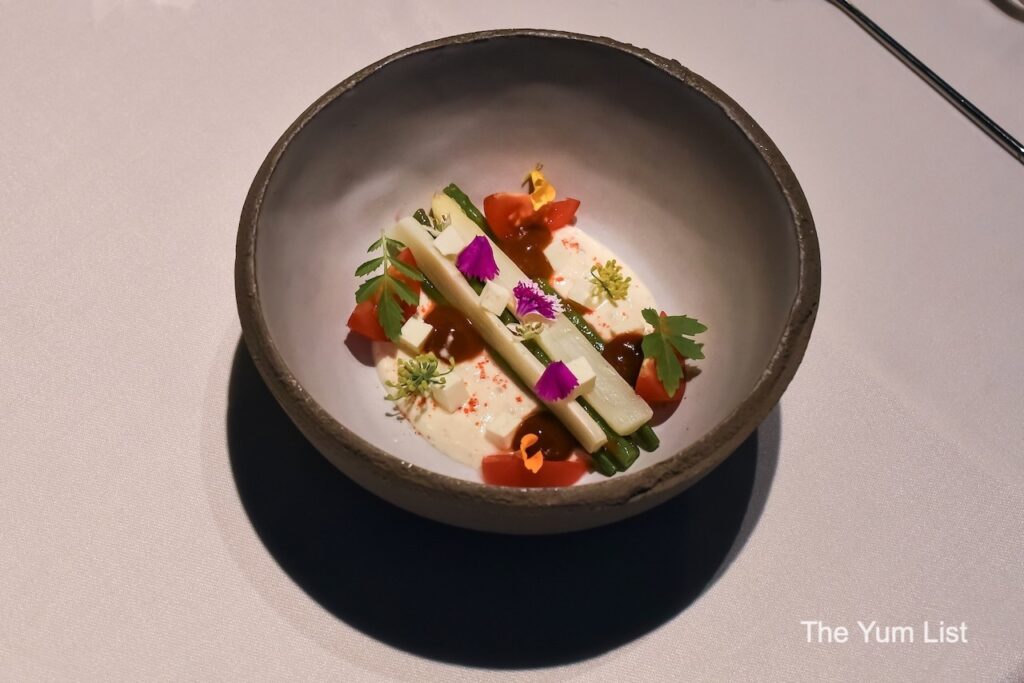
Macher Jhol
Macher Jhol is a fish dish from West Bengal, where acidity and sweetness are a popular pairing. Here, steamed in-season halibut — rubbed with miso and topped with smoked trout roe — sits on a bed of Dijon mustard sauce. It’s complex on the palate, though remains delicate throughout; it begins with a kick from the mustard before the sweet fish and savoury miso come through, rounded off with the crunch and burst of the roe.
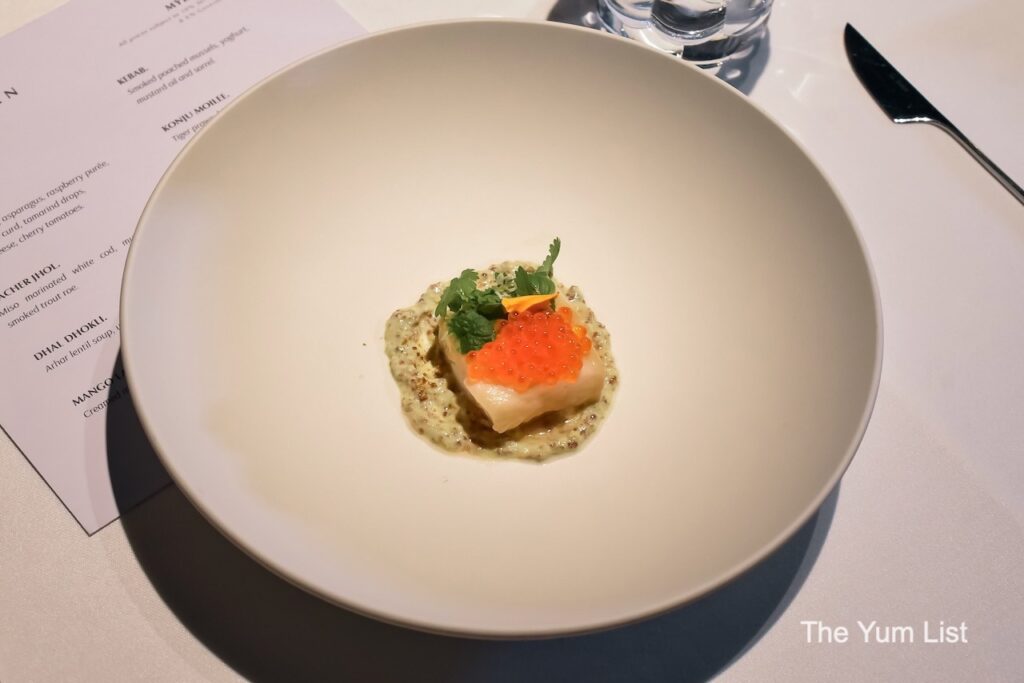
Dhal Dhokli
We head West to Gujarat, where spice and sweetness reign, for Dhal Dhokli. Chef Yogi’s version is Japanese soba noodles tossed in butter and garlic and served in a lentil soup with scallops. There’s a natural sweetness to the lentils, which becomes more savoury as the umami emerges, without spice leaving the palate. Here, ‘spice’ is never a punch or a kick; it’s about flavour, feeling and warmth. As the dhal envelopes the buttery noodles, it adds an extra dimension of richness and comfort to the dish.
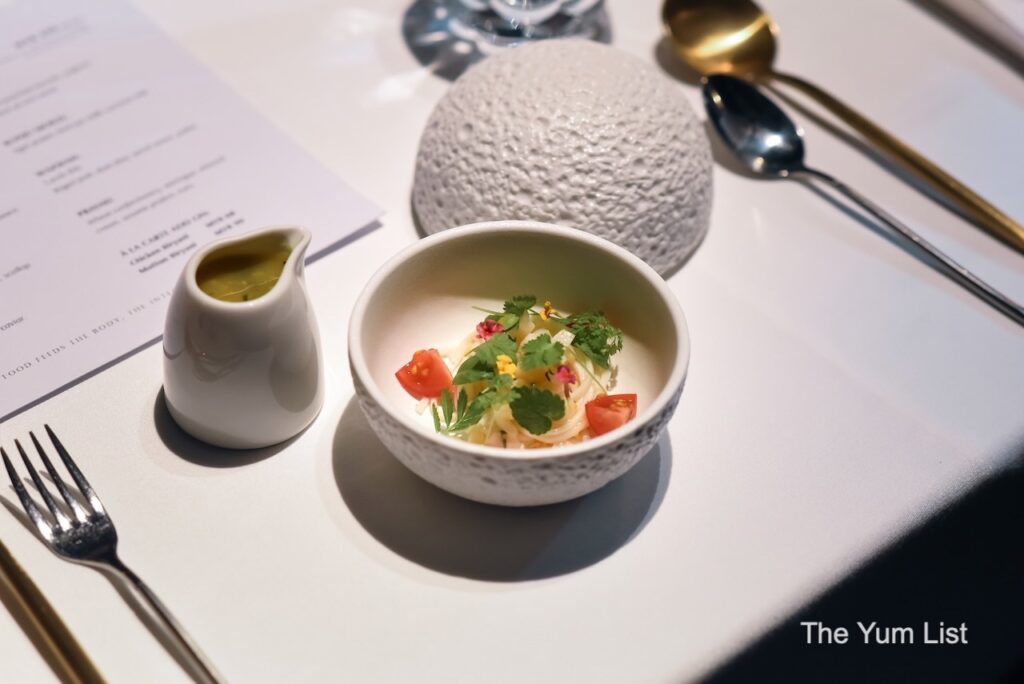
Mango Lassi
Mango Lassi is the most iconic Indian drink — so naturally, Chef Yogi has turned it into something edible. (This definitely feels like challenging assumptions, but I keep quiet. This man knows what he’s doing.) Creamed mango pulp is served with a generous topping of caviar; it’s a playful combination, sweet and salty, and the lassi is the smoothest and lightest you’ll ever taste.

We’re starting to really come to terms with the concept here – this is all about conflict. Without conflict, there cannot be discussion; without discussion, there cannot be change.
Kebab
The Kebab is just as subversive, swapping the usual stick of minced meat for smoked and poached Australian mussels and yoghurt with mustard oil. And yet, somehow, it’s still a ‘kebab’. There’s a deconstructed feel to this dish, as it’s topped with edible garnishes that are typically used in kebab preparation.
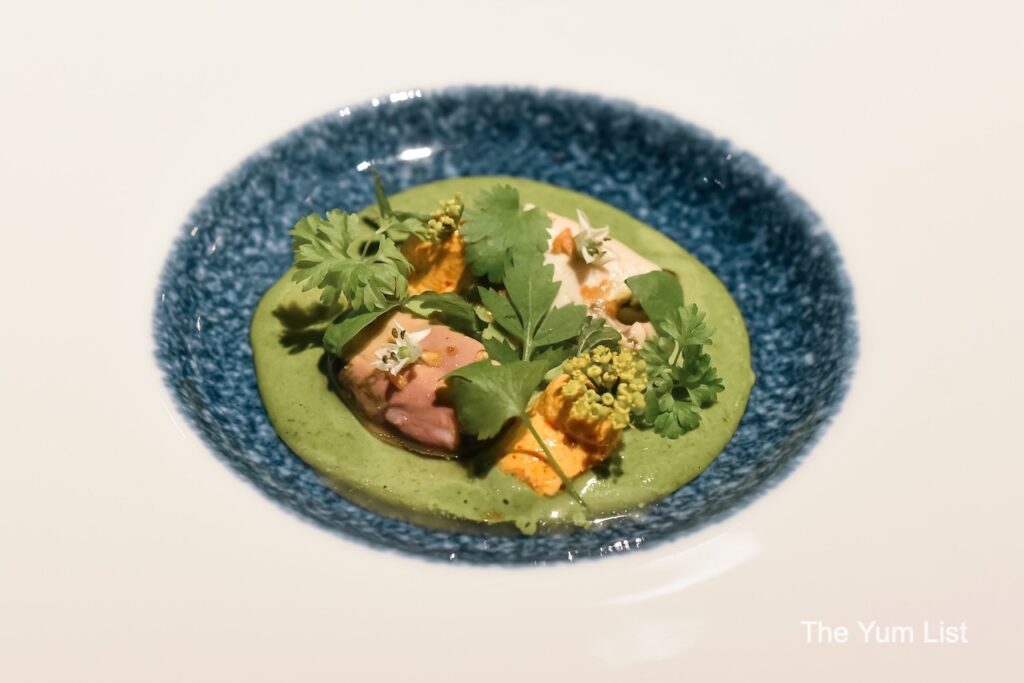
Konju Moilee
Next, to Kerala for Konju Moilee. The Keralites masterfully incorporated chillies into their cooking when the Portuguese introduced them to India in the late 16th century, and this dish is a homage to that spicy heritage. A fresh, roasted tiger prawn — cooked over charcoal to about 80% to preserve the delicate, sweet flavour of the meat — is served on a coconut milk base and topped with bird’s eye chilli butter. The coconut milk tempers and balances the fiery chilli; again, there is no sharp smack from the spice but a growing warmth and lingering heat. I’m quite sure this is the best prawn I’ve ever tasted.
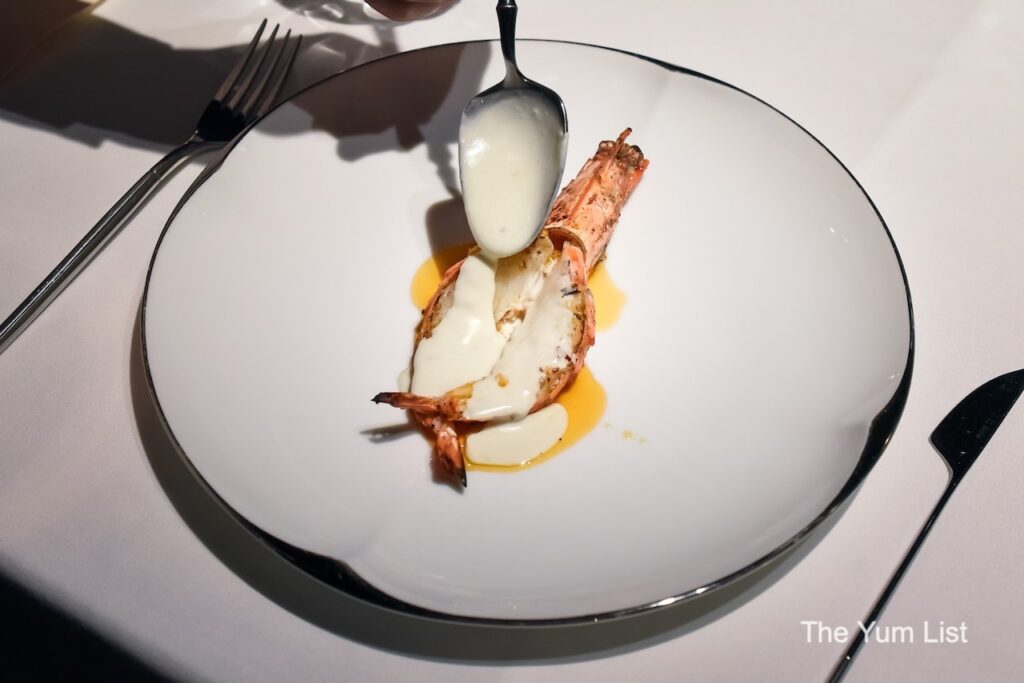
We move from the south coast to the northern, mountainous territory of Jammu and Kashmir – the coldest region in Asia. Here, the emphasis is not on fiery spices, but sweet; cloves, peppercorn and ginger for that warming glow on a freezing Himalayan night.
Wazwan Part I is a New Zealand grass-fed lamb rib cooked in a tandoor oven to get an almost-impossible medium-rare finish. It’s stunning. The white radish with walnut and mint leaf adds an incredible contrast and a sense of that Kashmiri warmth.
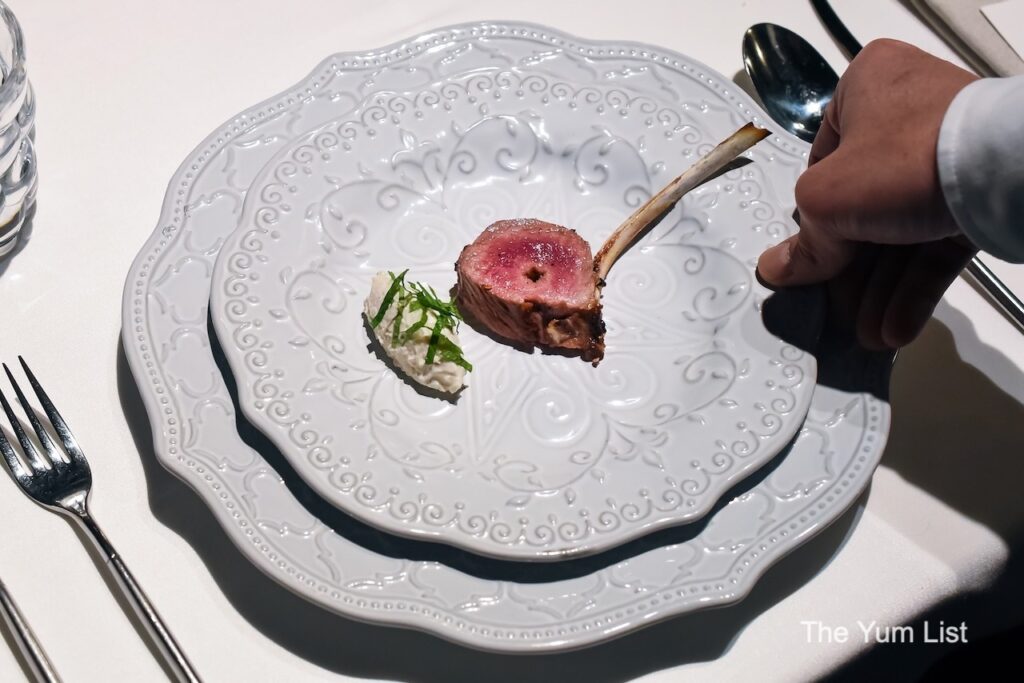
Wazwan Part II is probably the most recognisable dish on the menu, but of course has its own idiosyncrasies. It’s a Rogan Josh — which, contrary to popular belief, is not supposed to be spicy — through a fine dining lens, with a French parvé potato with sorrel sauce for good measure. Tenderloin lamb in a beautiful curried sauce comes with pilaf rice (using 2-year-aged basmati grains and Kashmiri saffron), cashew nuts, shaved almonds, dried figs and raisins.
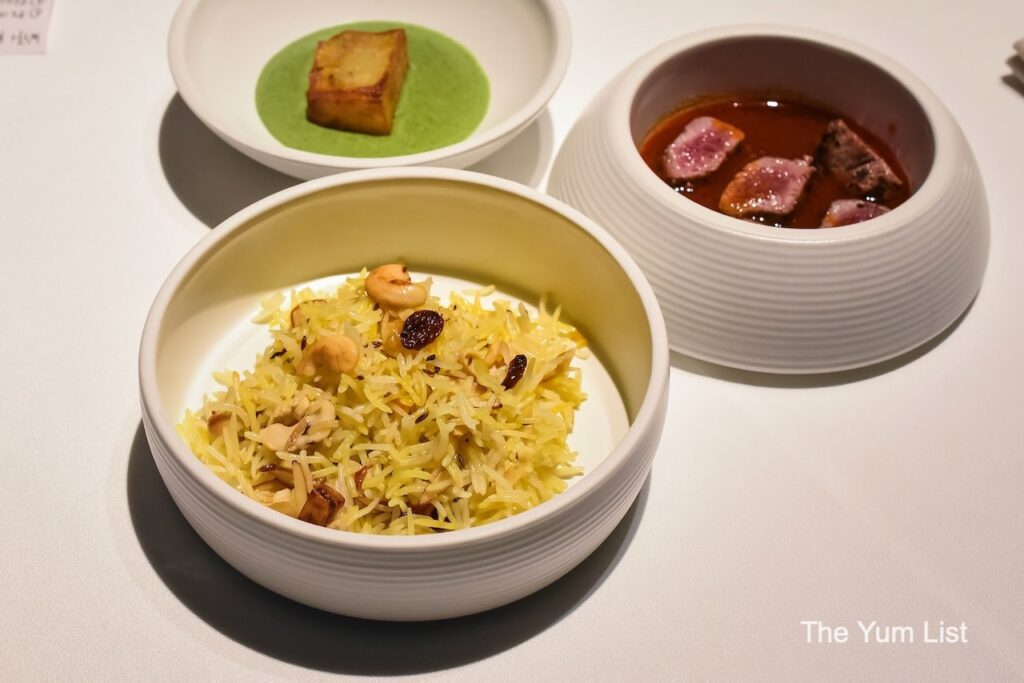
Prasad
The journey comes to an end with Prasad (‘offering’), a complex and multi-layered dessert with different textures and flavours on a wheat confectionery base that comes from a 4,000-year-old technique. It starts very sweet with meringue before moving through earthier layers of almond cream and sesame praline, then back to sweetness — all while staying light and balanced. Just as you think it might be getting too sweet, pistachio pops into the picture to ground you.
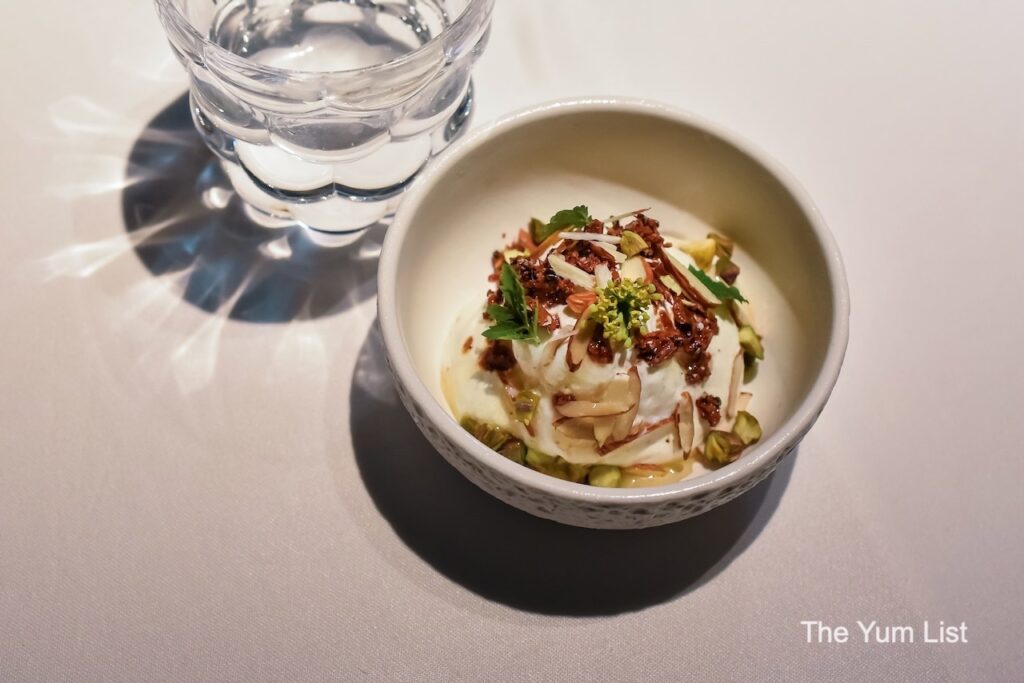
Parivartan Menu Review
At the beginning of our meal, Chef Yogi had cheerfully admitted that not everything on the menu would be to everyone’s taste — and that is precisely the point. It’s not necessarily to please but to present a different perspective. Conflict, discussion, change.
By the end of the meal, I’m a little concerned — because I really did like everything. Maybe my palate needs developing.
What I am absolutely sure of, however, is the imagination, invention and intention — not to mention the unbelievable culinary skill — that has gone into Parivartan. The journey has been masterfully mapped out, even though every step is into the unknown.
“Culinary experience” is another phrase that’s applied rather too generously (and often incorrectly). Again, at FLOUR, that’s exactly what this is: an experience for the senses, for the spirit, from the creative interpretation to the table conversation that Parivartan is sure to inspire.
“Intention feeds the soul,” says the menu. Quite right.
Parivartan is available until December 2023.


Reasons to visit FLOUR Restaurant: A subversive, surprising and completely unique menu that explores an entirely new dimension of Indian cuisine; the highest-quality international ingredients; a fascinating concept expertly presented to the table by Chef Yogi; a luxurious restaurant setting with excellent service.
FLOUR® Restaurant
No. 12 & 14, Jalan Kamuning (off Jalan Imbi)
Kuala Lumpur, Malaysia 55100
+60 12 960 0053
www.flourrestaurant.com.my
[email protected]
FLOUR® is open from 6 to 10 pm nightly except Tuesdays. Make reservations in advance. A non-refundable reservation booking fee of RM 75 per person is applied to the meal.
Find more restaurants for special occasions in Kuala Lumpur here and stay up to date with the latest food and beverage happenings in KL here and here.

